Here are the facts about Estonia - 30 things you (maybe) didn't know about the country. Estonia is known as the land of song and has a beautiful capital city, Tallinn. Does it end there? Nope! There's an underwater prison, the world's largest pine tree, where Sweden beat the Russians in Narva and the world's highest ceiling in a pub. Let's go!
Table of contents
Facts about Estonia
Estonia first has two land neighbours: Latvia to the south and Russia to the east. Then there are also two water neighbours: Finland in the north and Sweden in the west. Estonia is a member of both the EU and NATO to ensure its security from Russia. It is also the last place in Europe where women are in charge and ride a motorbike with a sidecar in national costume. Here are some facts about Estonia!
1. Johannes Kotkas won many wrestling matches
Johannes Kotkas from Estonia has won three European Championship gold medals in Greco-Roman wrestling, in 1938 Tallinn, 1939 Oslo and 1947 Prague, as well as Olympic gold in 1952 Helsinki and world silver in 1953 Naples.

2. There are many women in the East
There are 116 women for every 100 men in Estonia. If there are too few women in your country, you know where to go if you are interested in women.

3. Estonian chess champion Paul Keres was one of the world's elite
The incredibly popular Chess champion Paul Keres (1916-1975) passed away in 1975. More than 100,000 people attended the funeral. WOW!

4. At the Rummu quarry there is a sunken Soviet prison.
Rummu quarry is a very different sun and bathing paradise, where you can swim or dive around a sunken Soviet prison. The crystal clear and shimmering green waters have transformed the place into an underwater museum and holiday paradise.
In the quarry Soviet prisoners quarried limestone. When Estonia gained independence in 1991, all Soviet activities were shut down and the pumps that kept the groundwater away were switched off. The water rose so fast that there was no time to move a building or even an excavator.
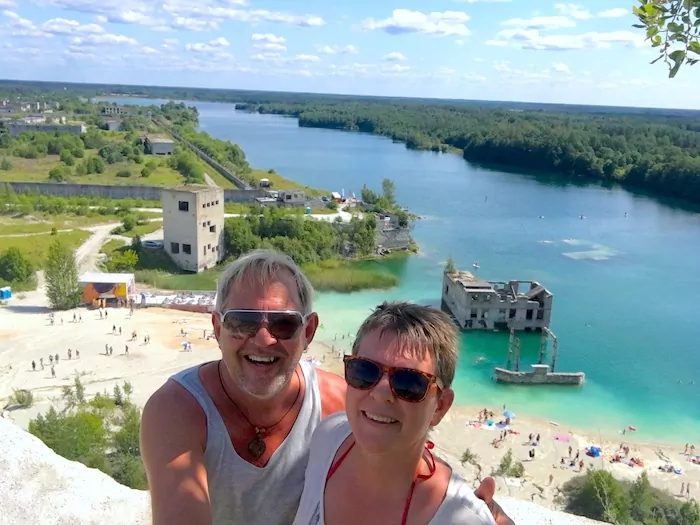
5. There are many protected forests in Estonia.
As much as 18% of Estonia consists of protected nature and they also have six major national parks:
- Lahemaa National Park with mansions and wilderness
- Soomaa National Park with wetlands, canoeing and bog experiences
- Matsalu National Park with birds and nature
- Vilsandi National Park with lighthouse, seals and orchids
- Karula with 40 small hidden lakes in its beautiful nature
- Alutaguse is a new national park in coniferous forest and marshland.
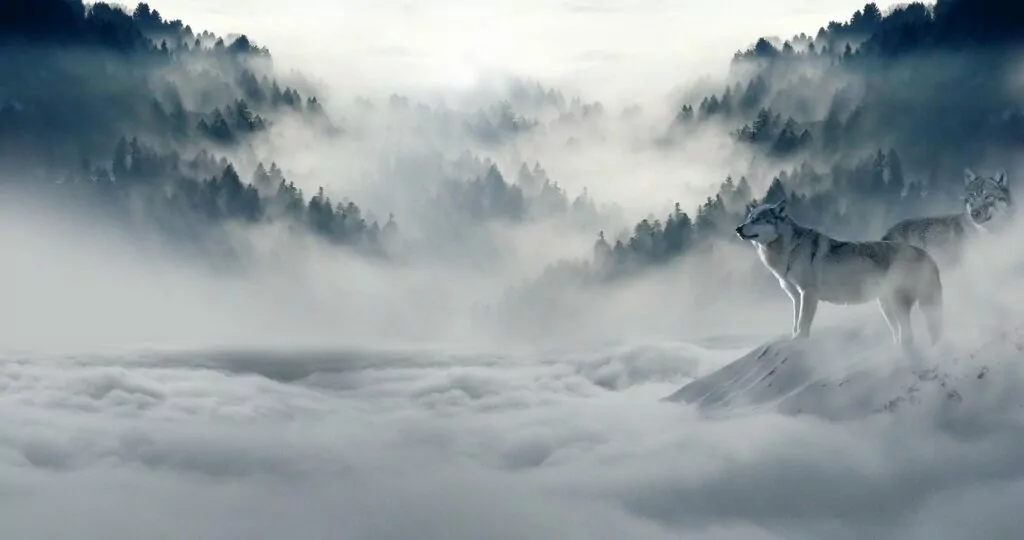
6. The sport of kiiking comes from Estonia
Estonian Ado Kosk invented the sport of 'kiiking' in 1996. The sport involves a large swing that can rotate 360 degrees. New challenges when you visit the country.
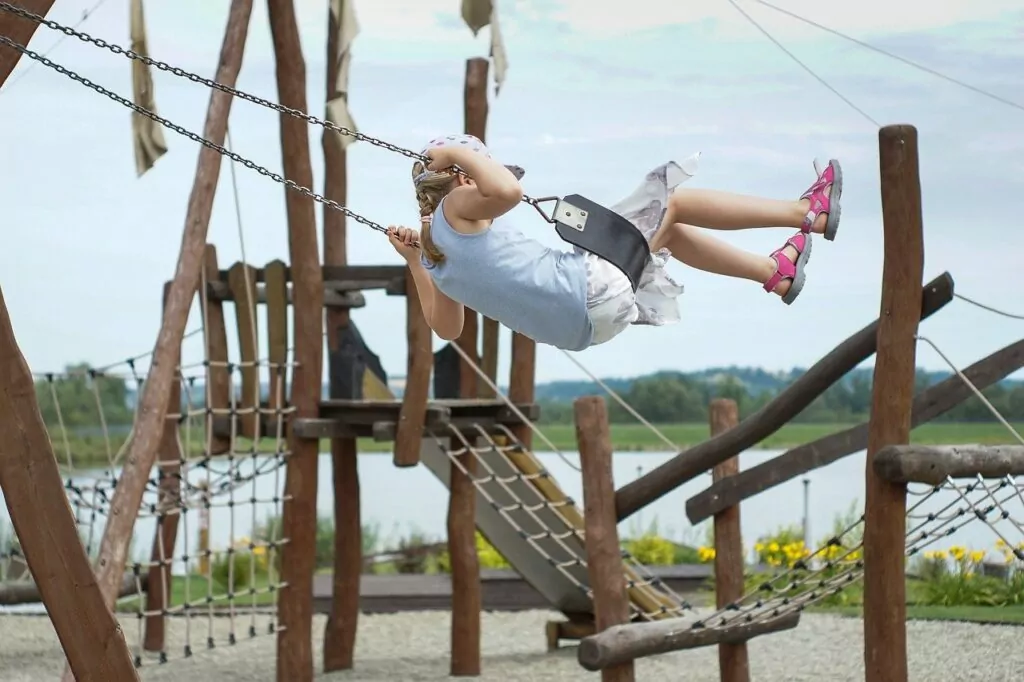
7. A whole island where women are in charge
Kynö or Kihnu as the island is called in Estonian, is protected by UNESCO as an intangible cultural heritage. Here, ladies ride motorbikes with sidecars in folk costumes and hold all the important posts. Kynö is called the last island in Europe to be a matriarchy.
It started with the men being seafarers and labourers who, for example, collected stones from the seabed and sold them to St. Petersburg and other cities. When men were away for many months at a time, women had to make important decisions, and this continues to this day.
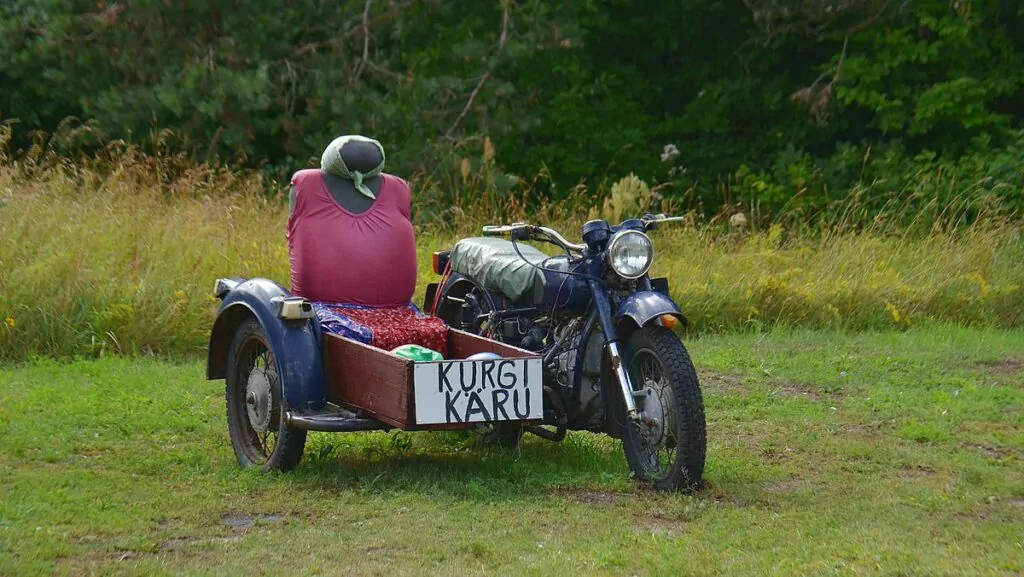
8. Swedish signs in Narva
Sweden has fought against Russia i Narva, on the border with Russia, and won. Here we have the large castle Hermannsborg with the tower Long Hermann, the Swedish copper lion and the bastion Victoria. When signs explain the sights, they are in Estonian, Russian and Swedish. How cool is that?

9. 600 years of Swedish history on Dagö.
Between 1200 and 1781 Swedish farmers lived on the islands in the Baltic Sea in Estonia. There were 80 villages with several thousand Swedes. Dagö (Hiiumaa), where the Swedish church can still be found today in the village of Rootsi (meaning Sweden). The village of Röicks, or Reigi as it is called in Estonian, was the centre of Estonian Swedes until 1781.

10. Estonia is a very digital country with a straight tax.
Estonia was the first country in the world to hold an election campaign online in 2005, with around 98 per cent of banking transactions taking place online and nine out of ten income tax returns being filed electronically. Another interesting fact is that in 1994 the country introduced a straight 26 per cent tax for all citizens. Latvia and Lithuania followed suit and have the same straightforward system.

11. Estonia has 2 independence days
Estonia became independent from Russia on 24 February 1918 and again on 20 August 1991 after 51 years of occupation. Just celebrate 2 times every year!

12. Many meteorite craters in Estonia
Estonia has the highest the number of meteor craters in the world per km2. Kaali crater on the island Saaremaa is one of the most famous. About 7500 years ago, a meteorite fell on the island of Saaremaa in Estonia, forming a crater 110 metres wide and 22 metres deep. In addition, eight smaller craters were formed around the area.

13. Estonia became Swedish in 1561
A showdown between Russia, Denmark, Sweden and Poland-Lithuania resulted in the Knighthood of Estonia and Tallinn surrendering to Sweden in 1561.
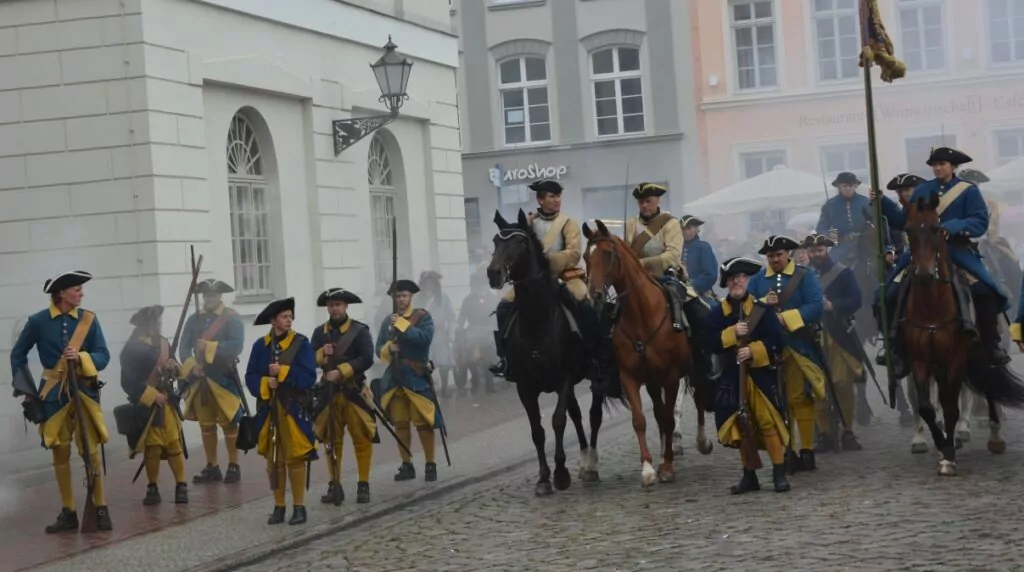
14. In 1781, the Estonian Swedes were deported to Ukraine.
Times got worse and Kataina II from the Soviet Union who ruled Estonia sent all the thousands of Swedes to Ukraine. They had to walk to Ukraine, to a new Swedish village, and many died on the way. The Swedish village still exists in Ukraine.

15. the 'Keik in the kitchen' gun tower in Tallinn
In the 15th century one of the towers was built into the city walls of Tallinn, making it something special. How about walls four metres thick, 38 metres high and 17 metres in diameter? Rumour had it that you could peek into the kitchens of your enemies - 'Kiek in de kök'.

16. The world's largest pine tree is in Estonia
South-east of Tartu in eastern Estonia, in a place called Ootsipalu in Pölva County, stands the world's tallest pine tree at 46.60 metres. The pine belongs to the genus Pinus Silvestris, which can live for more than 700 years.

17. Estonia winner of the sport "Wife carrying".
Wife Carrying World Championships was won by Estonia 11 years in a row between 1998 and 2008. They found their own technique called "Estonian Carry", running with their partner on their shoulders. Awesome!

18. Adventures of the hero Kalevipoeg
The War of Independence Monument stands by the Emajögi River in Tartu along the Vabaduse puiestee seafront. The tale of the son of Kalev who had superhuman strength is a national epic in Estonia. It was first published in 1857-1861 and collected in book form in 1862.

19. Maiasmokk café opened in 1864
Estonia's oldest café can be found at Pikk 16 in Tallinn. The interior of the shop has remained the same for 150 years, and if you want to experience the good old days of delicious pastries, don't miss this Tallinn gem.

20. Rocca al Mare is Estonia's Skansen.
If you want to stroll among windmills and small houses? The Rocca al Mare open-air museum in the Bay of Kopli, 30 minutes from Tallinn, offers a taste of old Estonia for the whole family, with thatched-roof houses everywhere for you to explore, an art of the old craft.

21. The Estonian flag was created in 1881.
The colour blue on the Estonian flag represents the country's sky, sea and lakes. The colour black symbolises the sorrows that the people of the country had to experience for years. The colour white represents the country's desire for freedom, like the snow in Estonia.
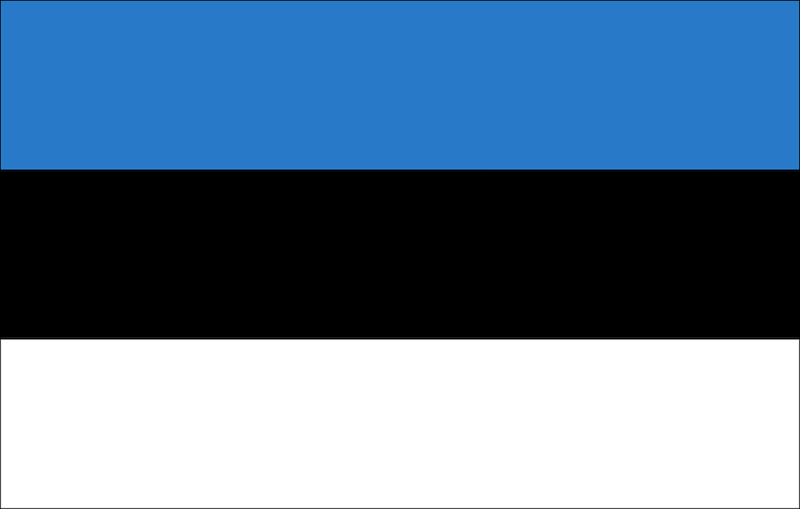
22. Ilon Wikland comes from Estonia
Ilon Wikland has illustrated most of Astrid Lindgren's children's books and was born in 1930 in Tartu (Dorpat), and grew up in Haapsalu. Ilon (Maire Ilon Pääbo) came to Sweden at the age of 14 during the Second World War. Strolling around Haapsalu, where she grew up, you realise where she found her inspiration for the Bullerby children and other children's books. You can visit the museum 'Ilon's wonderland'.

23. Estonia has many supermodels
Estonia has the most supermodels per capita in the world. How about 74 hotties per million people? Carmen Kass, Karmen Pedaru and Elisabeth Erm are some of the beautiful girls from Estonia.

24. the pub with the highest roof in the world
The Püssirohukelder pub is located on the slope of the Cathedral Hill in Tartuand is the pub with the highest roof in the world. The pub is listed by the Guinness Book of Records at 10.2 metres high. The building was originally a gunpowder cellar, dating from 1767.

25. The world's most spa-friendly city is in Estonia
City of Kuressaare on Saaremaa is the world's most spa dense city with one spa per 10 inhabitants. It must be hard to choose the right one?

26. The University of Tartu was Sweden's second university
University of Tartu in the city of Tartu, was Sweden's second university after Uppsala. It was founded in 1632 by the Swedish King Gustav II Adolf and Johan Skytte. This beautiful monument of Johan Skytte is located on the Cathedral Hill in Tartu.
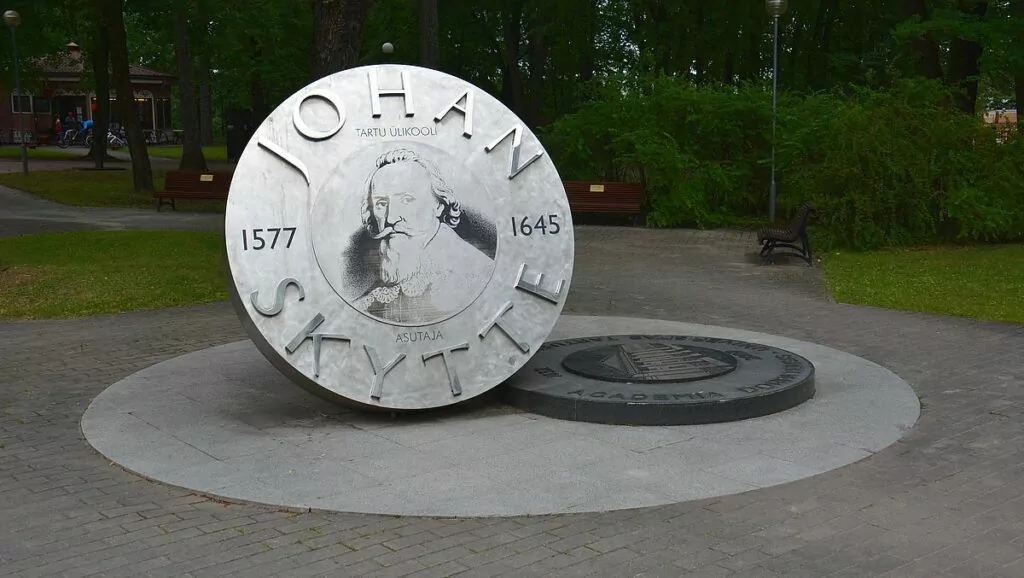
27. Lake Parika's heart lake
The incredibly charming heart-shaped lake is located in Viljandi County. There are wooden boardwalks around the lake so you can walk around, before you might want to take your love bath.

28. Skype was invented in Estonia
Skype was invented in Estonia and the internet is a big part of the country's infrastructure. Wifi access points are all over Estonia and even in the deepest forests. We know, we've been there and there was never a problem!

29. Estonian population preserves Swedish history
Korsberget on Dagö was the last place where the Swedes prayed before leaving Estonia in 1781. People come to this place all the time and the whole forest is full of crosses. You have to make a cross out of branches when you come here. You get teary-eyed as a Swede at this memorial site. Absolutely fantastic!

30. Tallinn Singing Field has the largest choir in the world
During the Tallinn Song and Song Festivalwhich takes place every five years, there are 30,000 amateurs. It attracts 100,000 people and 10,000 in costume. The next time is in 2024, so keep that year in mind! The stage was built in 1959 and song unites the country. Powerful! Estonia is sometimes called the singing nation and has the world's largest collection of recorded folk songs, around 133,000.



More interesting facts about Estonia
Estonia's national dish is sauerkraut stew
Estonia has 4 UNESCO World Heritage Sites: Tallinn Old Town, 3 locations of the Struve meridian arc with measurement points Dorpat, Katko and Woibifer
Estonia won Eurovision Song Contest in 2001 with Tanel Padar and Dave Benton and the song everybody.
Whole 78 % believes that religion doesn't matter to the Estonians, because they'll be fine. Atheist of course!
Estonia's national anthem called Mu isamaa, mu õnn ja rõõm since 1920. It means 'My homeland, my happiness and joy'.
Television tower in Tallinn called Pirita is 314 metres high and is the tallest building in Estonia. It's very hip to have a drink or a bite to eat on the outdoor terrace and enjoy the panoramic view. Dare to walk on the edge of the tower? The TV tower is located at Kloostrimetsa tee 58a, Pirita Linnaosa.
The Tallinn Christmas Market was voted #1 in Europe in 2019, and it is also the most beautiful medieval city we have in Europe. Don't miss this in the future! Great fun for Estonia and congratulations!
There are lots of courses with disc golf, which is incredibly popular in Estonia. Don't forget the frisbee when you visit.
Since 2013 has (Tallinn) free public transport (for those living in Tallinn) to reduce other car traffic. Very good Estonia!
Niku Puppet Museum in Tallinn where you can play with puppets, knitting, mittens, shadow puppets and masks. You can try on costumes and wigs in an actor's wardrobe and build a stage on a theatre artist's magic table.
Estonia's largest cultural centre is Telleviski creative workshop 10 minutes from the Old Town towards Pelgulinn and Kalamaja is Balti railway station. Here you will find Estonia's largest cultural centre at Telliskivi 60a-8.

Surprising facts about Estonia
Were these surprising facts about Estonia, or did you know everything already? Do you have any more exciting facts about Estonia to share?

Facts about Estonia
- Country: Estonia (Republic with President)
- Population of Estonia: 1.3 million (2017)
- Capital city: Tallinn
- Population of Tallinn: 426 538 (2017)
- Estonia's second largest city is Tartu with 93 100 people (2017).
- Currency: Euro
- National Day: 24 February
- Members of NATO: Since 2004
- Members of the EU: since 1 May 2004, the Schengen area since 21 December 2007 and the Euro Council from 1 January 2011.
- Religion: Atheism, other orthodox or Lutheran Christianity
- Language: Estonian (many speak English or Russian)
- Time difference: + 1 hour (forward)
- Country number: +372
- National bird: Ladus swallow
- Emergency number? 112
- El? As in Sweden
- Water? It may be better to choose bottled water
- Price point? A little cheaper than in Sweden
- Longest river is called Võhandu jõgi and is 165 kilometres long.
- Biggest river is called Narva between Estonia and Russia and is 75 kilometres long.
- Highest peak: Suur Munamägi, which is 318 metres high.
- Biggest lake is Peipus and is shared with Russia and is 3 555 km².
- Estonia is is only 50 metres above sea level and is a lowland, with a maritime climate and 380 km of coastline. Estonia is larger in area than Denmark or the Netherlands.
- Biggest sports are ice hockey, weightlifting and wrestling.
- Watch out for? It is usually recommended to use taxis belonging to established companies.
- Think about? While English works well in Tallinn and other major cities, it can be difficult in rural areas.
- The roads? They are very good and it is easy to move around the country. Normal speed on major country roads is 90 km and in urban areas and towns it is 50 km. There are no road tolls for private individuals.
- Ferry runs between Stockholm and Tallinn (Tallink Silja Line and St Peter Line).
- With Tallink Silja Line you can, among other things, go on 40-hour cruise.
- You can also travel cheaper by cargo ship between Kapellskär and Paldiski (DFDS Seaways).
Historical facts about Estonia
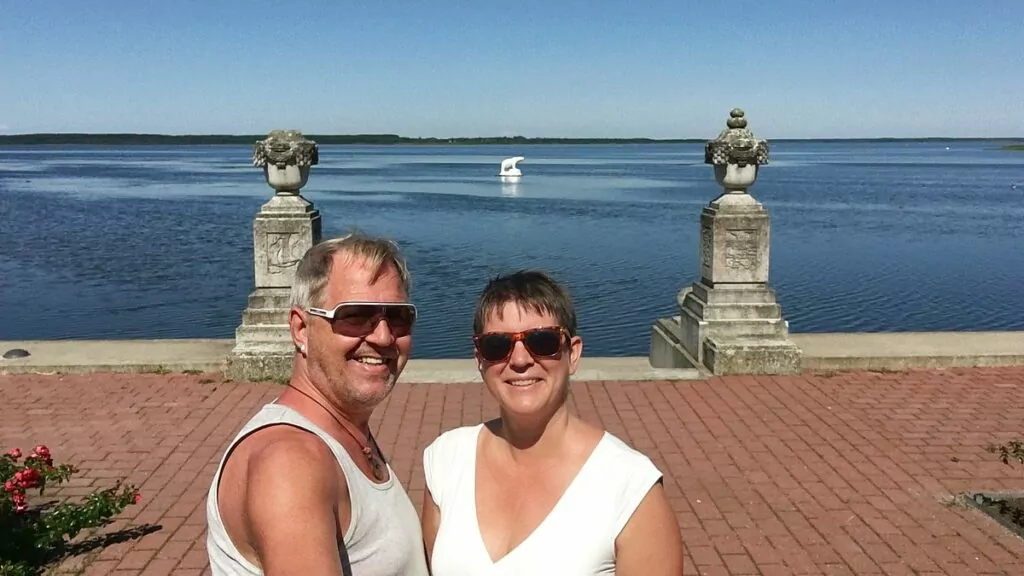
Estonia's oldest settlement belongs to the 9th century BC, when the country was populated by hunters and fishermen, who mainly used tools made of bone and horn. The most important settlements are Pulli on the river Pärnu jõgi.
Estonia was Christianised through the Danish mission in the 12th century. German expansion in the 13th century, through the Order of the Sword and the Teutonic Order, divided the country ecclesiastically.
The land of the Estonians was divided around 1200 into 14 provinces with their own central refugee fortresses.
RELIGIOUS STATES (1200-1558)
At the turn of the century 1200 Germans, Danes, Swedes and Russians competed for land in Estonian territory, whose population is estimated to be less than 200 000. After protracted fighting, the Germans won in 1227.
Latin-speaking monastic schools and other church schools were opened as early as the 13th century. After the Reformation, the Protestant church organised home schooling to teach peasants to read the Bible.
During the Swedish period parish schools and the first teacher training centre were founded under the leadership of B.G. Forselius.
In the second half of the 15th century the sculptor Bernt Notke was active in Tallinn.
In 1469 Michel Sittow was bornwho was court painter to Charles V and others. Most of Sittow's paintings are now in Europe's major museums.
SWEDISH DOMINATION (1558-1721)
The Livonian Order faced material, military and moral decline after the Reformation.
A new showdown between Russia, Denmark, Sweden and Poland-Lithuania resulted in the Knighthood of Estonia and Tallinn surrendering to Sweden in 1561.
The Swedes had lived here for several hundred years, and almost all the islands have long since been given Swedish names.
In 1632, the the first university in Tartu with the help of Johan Skytte and Gustav II Adolf. There were almost a hundred farms around the village of Rootsi (Sweden) in the 16th and 18th centuries.
In 1781 many Swedish people were deportedof the Soviet Union's Catherine II from Dagö to the Swedish village in Ukraine. History abounds in today's Estonia.
ESTONIAN CULTURE (1800-2000)
Estonian art history actually began in the mid-19th century and developed in parallel with the national currents that influenced cultural life in Estonia until the country's independence in 1918.
Art before 1850 is mainly characterised by the influence of Germany, Sweden and Russia. One of the oldest musical expressions in the Finno-Ugric region is the rune song, which dominated in Estonia until about 1850.SectionStycke
Old folk musical instruments are bugle, lur, reed pipe, bagpipe, mungiga and kantele (in Estonian kannel).
In the Swedish-speaking The population, which until 1944 lived on the islands off Estonia, retained ancient musical traditions, including playing the string harp.
Choral singing from Runö has been released on disc by Svenskt visarkiv.
INDEPENDENCE (1918-1940)
First the victory in the Estonian War of Independence of 1918-20 against both Bolsheviks and Baltic Germans created a foundation for the independent democratic Republic of Estonia. With the Peace of Tartu on 2 February 1920.SectionRubrik
SECOND WORLD WAR (1939-45)
Year 1939 Estonia's population was 1 134 000, of which 1 010 000 were Estonians. The secret protocol of the Molotov-Ribbentrop Pact brought Estonia into the Soviet 'sphere of interest'.
Thus enforced In September 1939, Stalin established military bases in Estonia for 25 000 men. In October, Hitler called 'home' the country's 16 000 or so.
SOVIET RULE (1945-91)
The renewed Soviet occupation resulted in the deportation of a further 5 000. Of the 43,000 Estonians mobilised by the Soviets, only 5,000 returned.
SFSR, Russian Soviet Republic, incorporated Estonian areas east of Narva and around Petseri with about 60,000 people.
INDEPENDENT AGAIN (1991-)
Full independence of Estonia was quickly recognised by a number of states, including the Soviet Union. However, it took another two years before the last Soviet (Russian) troops were withdrawn.
At the first presidential- and parliamentary elections in 1992, Lennart Meri was elected President. Since then, former Soviet politician Arnold Rüütel and Toomas Hendrik Ilves (born 1953), who grew up in exile in the USA, have assumed the presidency.
In 2016, Kersti Kaljulaid the country's first female head of state.
CURRENT
Estonia is the richest and most prosperous of the Baltic States. The country has also enjoyed consistently high economic growth since the mid-1990s, with the exception of the crisis years of the late 2000s.
The capital city of Tallinn and the neighbouring area have developed faster than the rest of the country, especially the north-eastern parts. The average wage in Estonia in 2012 was around EUR 800, while the minimum wage was EUR 290. SectionStycke
Kinho Island is the last matriarchal society in Europe.














Husis blog says:
This was a very good and informative post!
Ever since my male owner attended your lecture at Elmia, he has been dreaming about Estonia. However, my female owner lire is more restrained. But as things stand in the world, he probably has a few years to discuss this and then he will also show this blog post that made him even more keen on this country.
25 February 2021 - 9:50
Peter says:
I'm writing this so that you two can have a wonderful experience in life, which is why we live and why we have motorhomes.
25 February 2021 - 22:51
bmlarstravellingblog says:
We have been wanting to explore Estonia, Latvia and Lithuania by motorhome, but it looks like it will be another year or so. Really good post with lots of information.
25 February 2021 - 15:51
Peter says:
Thanks and we are keen on the rest like Latvia and Lithuania. We take it in 2022 because we have lots booked, but you are welcome to go before 🙂 .
25 February 2021 - 22:53
Lena - good for the soul says:
Yep, knew everything already... 😉 Or not. But I have heard about that "bitchy" thing. So, how do you even come up with something like that?! 🙂
Have only been to Tallinn. Would love to go back to see more.
Hug Lena
25 February 2021 - 17:36
Peter says:
Hahahaha 😁 Lena! You are just too nice! we like. Riga also with good shopping and good food. Maybe we should go together when this drops? Many hugs!
25 February 2021 - 22:56
BP says:
What a marathon post about "little" Estonia. Can safely say that everything except what you had written about during your trip was new to me. So thanks for the interesting info:-) What a research job:-)
25 February 2021 - 21:25
Peter says:
Thank you BP. I am trying in many different languages to find out everything about all the countries, and see what is true and what is exaggeration, and of course it takes time but what fun it is in these boring times. We who have great interests are the winners in this boring covid time. Be well BP!
25 February 2021 - 23:00